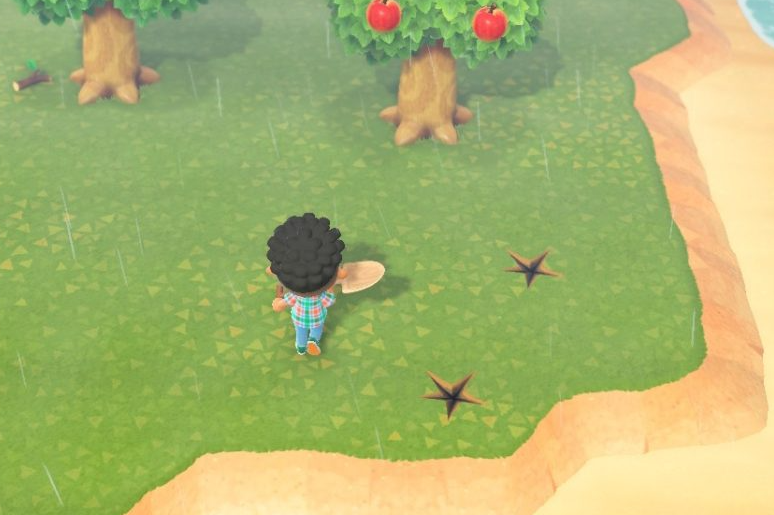Animal Crossing New Horizons Fossils Guide - How to Find, Check, Assess, Donate Fossils & Price List
Among a legion of Animal Crossing items, fossils are a type of useful objects that can be displayed in the museum as precious exhibits and sold for bells in ACNH. Here is our Animal Crossing New Horizons fossils guide covering how to find, check, assess, and donate them, what to do with them, fossils price and how to farm fossils fast in the game.

What are Animal Crossing New Horizons Fossils and What to Do with Them?
Fossils is a class of collectibles buried under the ground in Animal Crossing New Horizons, you can dig fossils with a shovel equipped. There are total of 73 ACNH fossils can be found. Animal Crossing fossils can be donated to the museum after being assessed, stored in your inventory, put in your house or sold for making a lot of in-game currency. But you should donate your first fossil rather than sell it. The fossils displayed in the museum are arranged according to the pattern of the evolutionary tree, it shows the relationship between each fossil and other fossils, as well as the relationship between animals.
How to Find Fossils in Animal Crossing New Horizons?
It’s not difficult to find fossils in Animal Crossing. When you walk around your island and find some star-shaped depressions or cracks on the ground, use your shovel to dig in the spots, most of the time, a fossil is buried in it, in rare cases, there may be other items.
How many fossils are possible to get per day? The maximum number of Animal Crossing fossils per day you can get on your island is four. A new batch of fossils will be hidden on your island at 5 AM each day, you may get all the fossils either fast or only get a small amount, this is a tricky thing. To get as more fossils as possible, you should have the patience to search every bit of land and corner on the village, or go to Mystery Islands using Nook Miles Ticket for additional fossils.
How to farm fossils fast in Animal Crossing? Dig in 4 star-shaped cracks on your island firstly, after collecting fossils from each crack, trade your Nook Miles for a ticket and fly to other islands on a Mystery Island Tour, find at least 2 cracks on where you arrive. If you don’t have enough Miles, advance the time using the Time Travel on your Switch, repeat the process to find cracks on your island, and get all the fossils. You can also buy cheap Animal Crossing New Horizons Nook Miles Ticket on Mtmmo.com, save much more time and gather fossils fast. Another option to speed up the donation process it to trade your extra fossils with your friend, maybe those are what they require.
How to Check Fossils in Animal Crossing New Horizons?
Go to the Nook Stop terminal in Resident Services or Nook Shopping app on your Nook Phone, select the catalog contains wallpapers, flooring, and more. Click the Fossil tab on the top of the screen, you can see a list of fossils including those are sold and sent to others, sorted alphabetically.
How to Assess and Donate Fossils in Animal Crossing New Horizons?
Assessing Animal Crossing New Horizons is necessary before donations and make your fossils more valuable. When you have some fossils, enter the museum and speak to Blathers, who is operating the town museum. Select Assess fossils and choose all fossils in your inventory, then press + Button to confirm it. After Blathers identify each fossil you can know the types and prices of your fossils. Note that Blathers doesn’t accept duplicates, if you have donated one type of fossils before, do not donate it again. You can choose to sell the fossil for Animal Crossing bells or stock it in your inventory.
Animal Crossing New Horizons Fossils Prices
Here is a complete list of ACNH fossils with sell prices.
Acanthostega: 2,000 Bells
Amber: 1,200 Bells
Ammonite: 1,100 Bells
Ankylo Skull: 3,500 Bells
Ankylo Tail: 2,500 Bells
Ankylo Torso: 3,000 Bells
Anomalocaris: 2,000 Bells
Archaeopteryx: 1,300 Bells
Archelon Skull: 4,000 Bells
Archelon Tail: 3,500 Bells
Australopith: 1,100 Bells
Brachio Chest: 5,500 Bells
Brachio Pelvis: 5,000 Bells
Brachio Skull: 6,000 Bells
Brachio Tail: 5,500 Bells
Coprolite: 1,100 Bells
Deinony Tail: 2,500 Bells
Deinony Torso: 3,000 Bells
Dimetrodon Skull: 5,500 Bells
Dimetrodon Torso: 5,000 Bells
Dinosaur Track: 1,000 Bells
Diplo Chest: 4,000 Bells
Diplo Neck: 4,500 Bells
Diplo Pelvis: 4,500 Bells
Diplo Skull: 5,000 Bells
Diplo Tail: 4,500 Bells
Diplo Tail Tip: 4,000 Bells
Dunkleosteus: 3,500 Bells
Eusthenopteron: 2,000 Bells
Iguanodon Skull: 4,000 Bells
Iguanodon Tail: 3,000 Bells
Iguanodon Torso: 3,500 Bells
Juramaia: 1,500 Bells
Left Megalo Side: 4,000 Bells
Left Ptera Wing: 4,500 Bells
Left Quetzal Wing: 5,000 Bells
Mammoth Skull: 3,000 Bells
Mammoth Torso: 2,500 Bells
Megacero Skull: 4,500 Bells
Megacero Tail: 3,000 Bells
Megacero Torso: 3,500 Bells
Myllokunmingia: 1,500 Bells
Ophthalmo Skull: 2,500 Bells
Ophthalmo Torso: 2,000 Bells
Pachy Skull: 4,000 Bells
Pachy Tail: 3,000 Bells
Parasaur Skull: 3,500 Bells
Parasaur Tail:2,500 Bells
Parasaur Torso: 3,000 Bells
Plesio Body: 4,500 Bells
Plesio Skull: 4,000 Bells
Plesio Tail: 4,500 Bells
Ptera Body: 4,000 Bells
Quetzal Torso: 4,500 Bells
Right Megalo Side: 5,500 Bells
Right Ptera Wing: 4,500 Bells
Right Quetzal Wing: 5,000 Bells
Sabertooth Skull: 2,500 Bells
Sabertooth Tail: 2,000 Bells
Shark-Tooth Pattern: 1,000 Bells
Spino Skull: 4,000 Bells
Spino Tail: 2,500 Bells
Spino Torso: 3,000 Bells
Stego Skull: 5,000 Bells
Stego Tail: 4,000 Bells
Stego Torso: 4,500 Bells
T. Rex Skull: 6,000 Bells
T. Rex Tail: 5,000 Bells
T. Rex Torso: 5,500 Bells
Tricera Skull: 5,500 Bells
Tricera Tail: 4,500 Bells
Tricera Torso: 5,000 Bells
Trilobite: 1,300 Bells
- Diablo 4 Season 11 Leveling Guide - Best 1-60 Leveling Strategies & Routes
- Diablo 4 Paladin Leveling Skills & Build Strategy (Season 11)
- PoE 2 0.4 Best Atlas Trees & Strats for Currency & Divines
- Diablo 4 Dawnfire Drop Locations & Best Build (Season 11)
- Diablo 4 Purified Essences: How To Farm & Use (Hidden Altars)





 Google Safe
Google Safe
 Live Chat
Live Chat
 0
0
